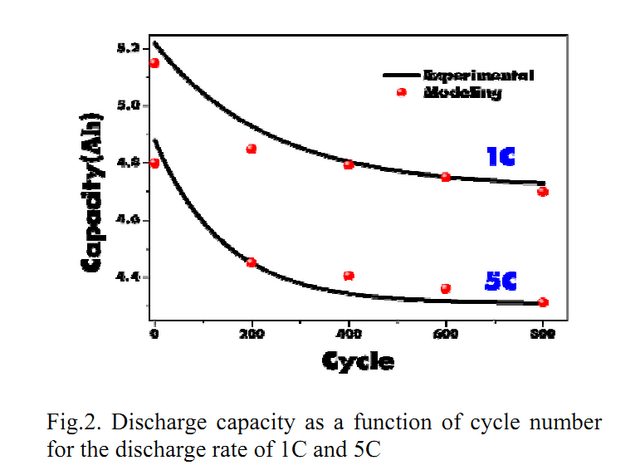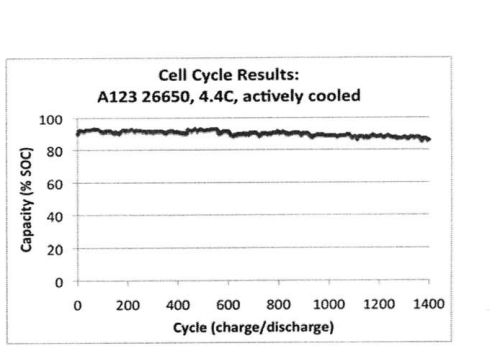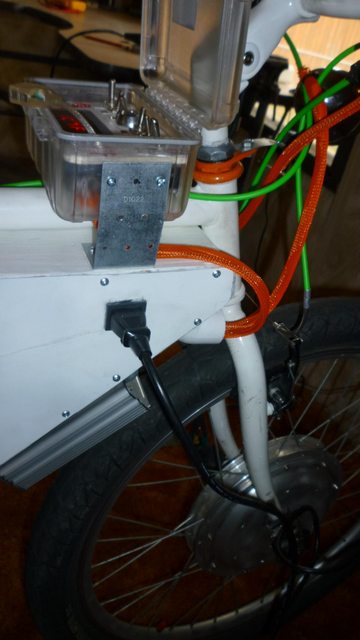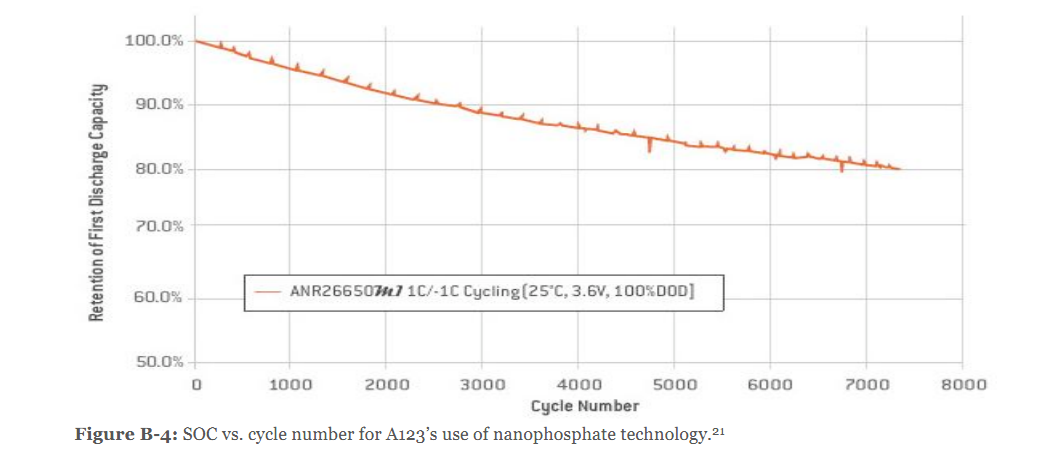auraslip
10 MW
- Joined
- Mar 5, 2010
- Messages
- 3,535
In an effort to save a lot of beginners time and money I've decided to break down the real difference between lipo and lifepo4 packs. When I was new here I was VERY excited to see how inexpensive the lipo packs from hobby king were, but as I spent hours upon hours reading on the subject I realized that they were not only more expensive, but would not be convenient or even doable on my "charge anywhere" commuter bike. This excerise will show the true costs of both types of batteries on the most typical begginer bike; a 48v hub motor with a battery capable of putting out 30 amps continuously. Why 30 amps? Because that's about as much power most 48v kits are capable of.
14s lipo vs 16s ping, headway, and a123
48v packs capable of 30 amps sustained
I don't want to waste time here dealing with people saying, "you could do it for much cheaper with some little 500mah chargers and a voltmeter for LVC!" Yeah, of course you could, but then it wouldn't be at all comparable to the performance and ease of a lifepo4 pack and 5ah charger. That being said, I'll be using an hyperion 14s charger and decent power supply to charge the lipo. For sourcing the lifepo4 headway packs I've used victoria from headway for pricing. The 10ah packs are either the normal 10ah cells that are 3c (barely!) or the 8ah (9ah really) cells capable of 8c. The 15ah headway packs are made from the 16ah cells. For the 15c a123 I've used cell_man. All pack pricing INCLUDES SHIPPING AND A 5AH CHARGER.
Costs
Materials:
You'll need cell-logs to manually perform the lvc. You absolutely need cell level LVC, and don't let anyone tell you that you can use the controllers LVC. To charge in a decent amount of time you'll need an expensive charger and power supply. Sure you could do it for less, but the first time you want to ride your bike and you can't because the batteries take 10 hours to charge or your cheap charger breaks you will realize you've wasted your money. Also you'll need wiring, connectors, a decent soldering iron, heat shrink, and electrical tape, but I'll assume you already have most of that.

You can plainly see that lipo loses every time in this power range. Lipo DOES become less expensive as you over come the initial investment, but even at 20ah the only more expensive option is a123 packs.
Time:
Building a lipo pack is easier than building a lifepo4 pack, but while the listed lifepo4 packs come pre-built, you have to build your lipo pack. It's not too hard, but it does require time and soldering. Another thing many people don't consider is the time to charge the pack. It's not as simple as plugging in the pack and walking away like it is with lifepo4. While it is trivial when using the 14s hyperion, using a smaller charger requires arranging the pack accordingly. For weekend riders who enjoy playing with their toys, it may be fun! If you're like me though and charge your bike several times a day (in several locations), It can be tire some.
User error:
Expect to mess up and break stuff. There is lots of room for error, and it happens fairly often here. Search for KFF. Even though you can't account for it, it will add to the costs. Even the best and brightest people here have had accidents, and I am of the mind that any handling of hot wires is dangerous and given enough time will eventually lead to an accident.

Cycle Life
The cycle life of Lipo is up in the air. While some have claimed as much as 1000 cycles, others have had problems at 300. There has not been any studies done on R/C lipo, but there are quite a few done on other types of Lipo and they show %20 capacity fade at 5c and %80 DOD. It is totally possible to get 1000 to 2000 cycles out of lipo by using a very conservative discharge charge(%30-%90 SOC) schedule, but that requires a pack twice as large and removes any cost or weight benefits. No matter how you treat your lipo batteries, it seems discharging below %20 dramatically reduces cycle life. More on this later.

This testing done by LG on lipo meant for cell phones. These batteries are discharged to %80 DOD.

This is done at 1c and %100 DOD, but with a123 even high rates don't seriously induce cycle fade. The same can not be said for ping though.
If you use the conservative (%30-%90 SOC) with lifepo4 you can expect cycle life in the 5000 range, and even at %100 DOD it will still provide 1000-2000 easily.
Power
The high c rate(15c-90c) is the most touted feature of lipo. However, many of the people looking at lipo for it's low costs are using it in low power bikes so they have little to gain from it.

1200w/52v = 23 amps.
This graph shows how much power a motor is capable of putting out. In practice the battery current is higher, but it still drops off considerably once you get up to speed. 15-20 amps is around the amp draw you'll see with the above kit while cruising at 25-30mph. (If you use the speed %120 mod, expect that to go up to 30 amps though) Even the lowest c-rate lifepo4 is more than capable of putting out the peak amps needed to get up to cruising speeds, so you could easily use a battery capable of only 20ah continuous if you didn't want the head room. This assumes that you don't do much stop and go riding, live in a hilly area, or ride off road. For those uses you'd really need a battery more capable of higher amp draws in the 30-35 amp range.
The low C rate ping is somewhere between 1.5c and 2c. This means the 15ah ping is happy doing 25-30 amps continuous, and the 20ah is fine with 30-40 amps continuous. This is more than enough.
The 10ah headway cells have a nameplate rating of 10c, but are are actually more like 2.5-3c. The 8ah headway cells (more like 9ah really) are the same form factor, but perform at 8c - 64 amps continuous. More than enough power for even some high voltage packages.
A123 are 15c, so even a tiny 5ah pack will be capable of putting 75 amps.
Reliability
It seems the biggest argument against lifepo4 packs is the bms. I do tend to agree that a cheap or abused BMS will be unreliable, but I think the number of reports of bms problems are skewed for a few reasons. The first being that bms users require no knowledge of the system and that trouble shooting bms requires in depth technical knowledge. So when a BMS fails, people almost always post asking for help. OTOH, when the various parts of a lipo pack fails, it's easy to see what has failed and how and simply order a replacement with out posting here. A well designed BMS will work flawlessly just like the BMS in your phone, laptop, and millions of EVs around the world.
To be perfectly honest, you are a 100x more likely to damage your lipo through user error than have a BMS failure. Even the best and brightest users here have destroyed packs and equipment through a moment of human error. It seems almost inevitable that you'll be tired and inattentive and BLAMMO, bad stuff happens. Compare that to a lifepo4 setup where my grandma could figure out how to charge the pack.
Repairing pouch and tab welded cylindrical packs is a big pain and out of most peoples league. I would certainly be nervous cutting open a pouch pack or taking a soldering iron to a cylindrical pack, and it's a valid concern. OTOH, other users have reported quality control issues with lipo packs from hobby king and this makes a certain economic sense. Even when faced with shipping back to the warehouse in the states, waiting a month or two for them to inspect the battery, and then waiting for them to send you a new one most people will probably just order a new pack and be done with it. If you have to ship back to China, the shipping alone is usually more than the battery. This means hobby king has little to lose from lax QC. Compare this to a battery pack seller who uses ebay or paypal. Losing even one paypal dispute can wipe out all profits for the month. Getting a paypal dispute and being forced to ship a replacement part or having the battery pack shipped back and repaired would destroy any profit made on the battery pack. This is why a good seller will thoroughly test a battery pack before shipment.
Weight and volumetric density
Lipo weighs ~%25 less than lifepo4. However in the 5ah, 10ah, 15ah, and 20ah packs this comes out to only a 1.25lb, a 2.5lb, a 3.75lb, and a 5lb difference respectively. This is not very much at all on an ebike.
Lifepo4 has 2/3rds the volumetric density of lipo. This means it's bigger and bulkier. It can be problematic to fit a large lifepo4 pack on a bike. The 16ah headways are too long to fit length wise in the triangle and still pedal comfortably. The 10ah headways are fine, but still a bit bulky. Ping is also bulky, and 48v20ah pack is hard to place in the triangle or in small trunk bags(although I've made it work just fine). Full suspension frames pose the biggest problem for lifepo4; seatpost mounted rear racks aren't secure enough (although some have found ways to mount racks to the rear swing arm) and there is no room in the triangle for a decent sized pack. A lipo pack on the other hand is easily split up and mounted anywhere on the bike you'd like.
Modularity and upgradability
A lipo pack is easy to take apart and reconfigure. It's a lot of fun to experiment with different voltages. Upgrading a lipo pack is almost as simple as ordering the new packs you need. Since it has a high C-rate you won't need to upgrade the capacity of the pack either. It's very simple, and this is huge plus for a lot of people.
Ping packs, having a low C-rate, aren't really able to handle the currents that a high voltage system is capable of. Basically once you get a ping, you might get pigeon holed at that voltage.
The 10ah headways would also suffer the same fate. However, it wouldn't be too much of a challenge to upgrade the voltage of the pack as well as the capacity to 20ah. If you're using the 8c 8ah headways, you won't need to upgrade the capacity. The headway pack building components are modular and easy to work with, but it's no where near the modularity of lipo.
A123 packs are tab welded. Physically adding more batteries to the pack would be out of the question for most, but upgrading capacity or voltage is as easy as ordering the new booster pack, bms, and wiring harness and putting them all together. Even small a123 packs should be capable of handling high currents and voltages.
Conclusion:
If you want an ebike because you enjoy riding or you need it to commute, a lifepo4 pack is the way to go. If you enjoy diddling with batteries and buying new toys and upgrades, Lipo can be a ton of fun. You can pinch pennies and get the absolute cheapest lipo setup, and save $100-$200 over a comparable lifepo4 pack. It'll perform exactly the same as a lifepo4 pack when you're riding it, but when it comes time to charge it you're going to be spending a lot of time diddling. Time that you could be riding, working to save up for a bigger better battery, or doing what I should be doing right now - homework.
14s lipo vs 16s ping, headway, and a123
48v packs capable of 30 amps sustained
I don't want to waste time here dealing with people saying, "you could do it for much cheaper with some little 500mah chargers and a voltmeter for LVC!" Yeah, of course you could, but then it wouldn't be at all comparable to the performance and ease of a lifepo4 pack and 5ah charger. That being said, I'll be using an hyperion 14s charger and decent power supply to charge the lipo. For sourcing the lifepo4 headway packs I've used victoria from headway for pricing. The 10ah packs are either the normal 10ah cells that are 3c (barely!) or the 8ah (9ah really) cells capable of 8c. The 15ah headway packs are made from the 16ah cells. For the 15c a123 I've used cell_man. All pack pricing INCLUDES SHIPPING AND A 5AH CHARGER.
Costs
Materials:
You'll need cell-logs to manually perform the lvc. You absolutely need cell level LVC, and don't let anyone tell you that you can use the controllers LVC. To charge in a decent amount of time you'll need an expensive charger and power supply. Sure you could do it for less, but the first time you want to ride your bike and you can't because the batteries take 10 hours to charge or your cheap charger breaks you will realize you've wasted your money. Also you'll need wiring, connectors, a decent soldering iron, heat shrink, and electrical tape, but I'll assume you already have most of that.

You can plainly see that lipo loses every time in this power range. Lipo DOES become less expensive as you over come the initial investment, but even at 20ah the only more expensive option is a123 packs.
Time:
Building a lipo pack is easier than building a lifepo4 pack, but while the listed lifepo4 packs come pre-built, you have to build your lipo pack. It's not too hard, but it does require time and soldering. Another thing many people don't consider is the time to charge the pack. It's not as simple as plugging in the pack and walking away like it is with lifepo4. While it is trivial when using the 14s hyperion, using a smaller charger requires arranging the pack accordingly. For weekend riders who enjoy playing with their toys, it may be fun! If you're like me though and charge your bike several times a day (in several locations), It can be tire some.
User error:
Expect to mess up and break stuff. There is lots of room for error, and it happens fairly often here. Search for KFF. Even though you can't account for it, it will add to the costs. Even the best and brightest people here have had accidents, and I am of the mind that any handling of hot wires is dangerous and given enough time will eventually lead to an accident.

Cycle Life
The cycle life of Lipo is up in the air. While some have claimed as much as 1000 cycles, others have had problems at 300. There has not been any studies done on R/C lipo, but there are quite a few done on other types of Lipo and they show %20 capacity fade at 5c and %80 DOD. It is totally possible to get 1000 to 2000 cycles out of lipo by using a very conservative discharge charge(%30-%90 SOC) schedule, but that requires a pack twice as large and removes any cost or weight benefits. No matter how you treat your lipo batteries, it seems discharging below %20 dramatically reduces cycle life. More on this later.

This testing done by LG on lipo meant for cell phones. These batteries are discharged to %80 DOD.

This is done at 1c and %100 DOD, but with a123 even high rates don't seriously induce cycle fade. The same can not be said for ping though.
If you use the conservative (%30-%90 SOC) with lifepo4 you can expect cycle life in the 5000 range, and even at %100 DOD it will still provide 1000-2000 easily.
Power
The high c rate(15c-90c) is the most touted feature of lipo. However, many of the people looking at lipo for it's low costs are using it in low power bikes so they have little to gain from it.

1200w/52v = 23 amps.
This graph shows how much power a motor is capable of putting out. In practice the battery current is higher, but it still drops off considerably once you get up to speed. 15-20 amps is around the amp draw you'll see with the above kit while cruising at 25-30mph. (If you use the speed %120 mod, expect that to go up to 30 amps though) Even the lowest c-rate lifepo4 is more than capable of putting out the peak amps needed to get up to cruising speeds, so you could easily use a battery capable of only 20ah continuous if you didn't want the head room. This assumes that you don't do much stop and go riding, live in a hilly area, or ride off road. For those uses you'd really need a battery more capable of higher amp draws in the 30-35 amp range.
The low C rate ping is somewhere between 1.5c and 2c. This means the 15ah ping is happy doing 25-30 amps continuous, and the 20ah is fine with 30-40 amps continuous. This is more than enough.
The 10ah headway cells have a nameplate rating of 10c, but are are actually more like 2.5-3c. The 8ah headway cells (more like 9ah really) are the same form factor, but perform at 8c - 64 amps continuous. More than enough power for even some high voltage packages.
A123 are 15c, so even a tiny 5ah pack will be capable of putting 75 amps.
Reliability
It seems the biggest argument against lifepo4 packs is the bms. I do tend to agree that a cheap or abused BMS will be unreliable, but I think the number of reports of bms problems are skewed for a few reasons. The first being that bms users require no knowledge of the system and that trouble shooting bms requires in depth technical knowledge. So when a BMS fails, people almost always post asking for help. OTOH, when the various parts of a lipo pack fails, it's easy to see what has failed and how and simply order a replacement with out posting here. A well designed BMS will work flawlessly just like the BMS in your phone, laptop, and millions of EVs around the world.
To be perfectly honest, you are a 100x more likely to damage your lipo through user error than have a BMS failure. Even the best and brightest users here have destroyed packs and equipment through a moment of human error. It seems almost inevitable that you'll be tired and inattentive and BLAMMO, bad stuff happens. Compare that to a lifepo4 setup where my grandma could figure out how to charge the pack.
Repairing pouch and tab welded cylindrical packs is a big pain and out of most peoples league. I would certainly be nervous cutting open a pouch pack or taking a soldering iron to a cylindrical pack, and it's a valid concern. OTOH, other users have reported quality control issues with lipo packs from hobby king and this makes a certain economic sense. Even when faced with shipping back to the warehouse in the states, waiting a month or two for them to inspect the battery, and then waiting for them to send you a new one most people will probably just order a new pack and be done with it. If you have to ship back to China, the shipping alone is usually more than the battery. This means hobby king has little to lose from lax QC. Compare this to a battery pack seller who uses ebay or paypal. Losing even one paypal dispute can wipe out all profits for the month. Getting a paypal dispute and being forced to ship a replacement part or having the battery pack shipped back and repaired would destroy any profit made on the battery pack. This is why a good seller will thoroughly test a battery pack before shipment.
Weight and volumetric density
Lipo weighs ~%25 less than lifepo4. However in the 5ah, 10ah, 15ah, and 20ah packs this comes out to only a 1.25lb, a 2.5lb, a 3.75lb, and a 5lb difference respectively. This is not very much at all on an ebike.
Lifepo4 has 2/3rds the volumetric density of lipo. This means it's bigger and bulkier. It can be problematic to fit a large lifepo4 pack on a bike. The 16ah headways are too long to fit length wise in the triangle and still pedal comfortably. The 10ah headways are fine, but still a bit bulky. Ping is also bulky, and 48v20ah pack is hard to place in the triangle or in small trunk bags(although I've made it work just fine). Full suspension frames pose the biggest problem for lifepo4; seatpost mounted rear racks aren't secure enough (although some have found ways to mount racks to the rear swing arm) and there is no room in the triangle for a decent sized pack. A lipo pack on the other hand is easily split up and mounted anywhere on the bike you'd like.
Modularity and upgradability
A lipo pack is easy to take apart and reconfigure. It's a lot of fun to experiment with different voltages. Upgrading a lipo pack is almost as simple as ordering the new packs you need. Since it has a high C-rate you won't need to upgrade the capacity of the pack either. It's very simple, and this is huge plus for a lot of people.
Ping packs, having a low C-rate, aren't really able to handle the currents that a high voltage system is capable of. Basically once you get a ping, you might get pigeon holed at that voltage.
The 10ah headways would also suffer the same fate. However, it wouldn't be too much of a challenge to upgrade the voltage of the pack as well as the capacity to 20ah. If you're using the 8c 8ah headways, you won't need to upgrade the capacity. The headway pack building components are modular and easy to work with, but it's no where near the modularity of lipo.
A123 packs are tab welded. Physically adding more batteries to the pack would be out of the question for most, but upgrading capacity or voltage is as easy as ordering the new booster pack, bms, and wiring harness and putting them all together. Even small a123 packs should be capable of handling high currents and voltages.
Conclusion:
If you want an ebike because you enjoy riding or you need it to commute, a lifepo4 pack is the way to go. If you enjoy diddling with batteries and buying new toys and upgrades, Lipo can be a ton of fun. You can pinch pennies and get the absolute cheapest lipo setup, and save $100-$200 over a comparable lifepo4 pack. It'll perform exactly the same as a lifepo4 pack when you're riding it, but when it comes time to charge it you're going to be spending a lot of time diddling. Time that you could be riding, working to save up for a bigger better battery, or doing what I should be doing right now - homework.






